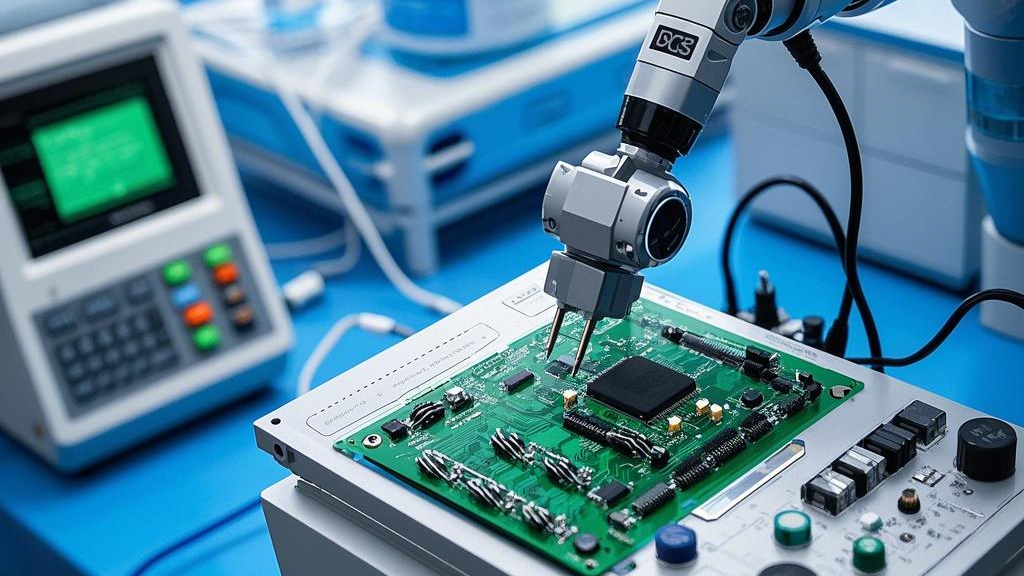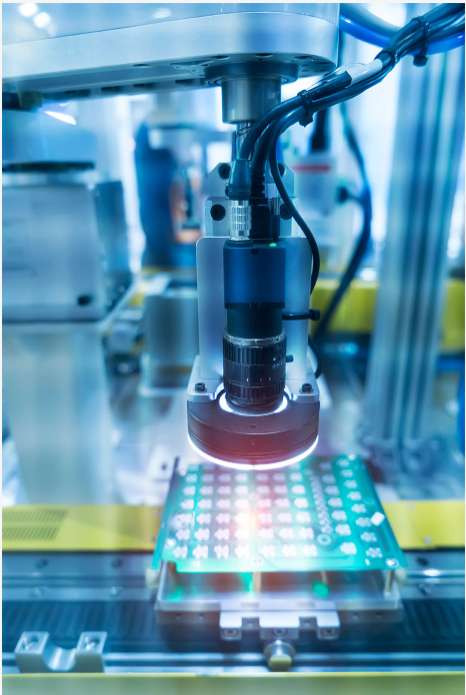If you're in the medical device industry and wondering how to validate your PCB manufacturing processes for ISO 13485 compliance, you're in the right place. ISO 13485 is an international standard for quality management systems (QMS) specific to medical devices, and validating your processes is a critical step to ensure safety, reliability, and regulatory adherence. In this comprehensive guide, we'll walk you through the essentials of PCB process validation for medical devices, focusing on ISO 13485 PCB validation and process control for medical PCBs. You'll learn the steps, requirements, and best practices to achieve compliance and maintain high-quality standards in your production.
Understanding ISO 13485 and Its Importance for PCB Manufacturing
ISO 13485 is a globally recognized standard that outlines the requirements for a quality management system in the design and manufacture of medical devices. For PCB manufacturers working with medical device companies, compliance with this standard is non-negotiable. It ensures that every process, from design to delivery, meets strict safety and performance criteria to protect patients and end-users.
In the context of PCB manufacturing, ISO 13485 compliance means that your processes must be controlled, documented, and validated to guarantee consistency and traceability. This is especially critical for medical PCBs, which are often used in life-saving equipment like pacemakers, diagnostic machines, and monitoring devices. A single defect or failure in a PCB could have catastrophic consequences, making process validation a cornerstone of compliance.

What Is PCB Process Validation for Medical Devices?
Process validation is the documented evidence that a manufacturing process consistently produces a product meeting predetermined specifications and quality attributes. For medical PCBs, this involves verifying that every step of the manufacturing process—from material selection to final inspection—meets the stringent requirements of ISO 13485.
The goal of PCB process validation is to ensure repeatability and reliability. This means that whether you're producing the first batch or the thousandth, each PCB must perform identically within specified tolerances. Validation typically includes three key phases: Installation Qualification (IQ), Operational Qualification (OQ), and Performance Qualification (PQ). We'll dive deeper into these stages later in this post.
Why ISO 13485 PCB Validation Matters
Medical devices often operate in high-stakes environments where failure is not an option. A PCB in a heart monitor, for example, must maintain signal integrity with impedance values within a tight range, often around 50 ohms for high-frequency signals, to ensure accurate readings. Any deviation could lead to incorrect data, misdiagnosis, or even harm to a patient.
ISO 13485 PCB validation ensures that such risks are minimized by enforcing strict process controls. It also helps manufacturers avoid costly recalls, legal liabilities, and damage to their reputation. Additionally, compliance opens doors to global markets, as many countries require ISO 13485 certification for medical device components.
Key Requirements of ISO 13485 for PCB Manufacturing
Before diving into the validation process, it's important to understand the core requirements of ISO 13485 that apply to PCB manufacturing for medical devices. These include:
- Quality Management System (QMS): Establish a documented system to manage all processes, including design, production, and post-market activities.
- Risk Management: Identify and mitigate risks throughout the product lifecycle, ensuring that potential failures are addressed before they occur.
- Process Control: Define and monitor critical manufacturing processes to ensure consistent output.
- Traceability: Maintain detailed records of materials, processes, and testing to allow for full traceability of each PCB.
- Validation of Processes: Provide evidence that processes consistently produce PCBs that meet specifications.
These requirements form the foundation for process control in medical PCB production and guide the validation efforts we'll discuss next.
Steps to Validate PCB Manufacturing Processes for ISO 13485 Compliance
Validating your PCB manufacturing processes involves a structured approach to ensure every aspect of production is controlled and documented. Below are the key steps to achieve compliance with ISO 13485.
1. Develop a Validation Plan
The first step in PCB process validation for medical devices is to create a detailed validation plan. This plan should outline the scope, objectives, and methods for validating each process. It should also specify the acceptance criteria, such as dimensional tolerances (e.g., ±0.1 mm for trace widths) or electrical performance metrics (e.g., signal speed of 5 GHz for high-speed medical applications).
Your validation plan must cover all critical processes, including material selection, etching, soldering, and testing. It should also align with the risk management framework of ISO 13485, identifying potential failure points and how they will be mitigated.
2. Conduct Installation Qualification (IQ)
Installation Qualification ensures that all equipment and systems used in PCB manufacturing are installed correctly and meet the manufacturer's specifications. For example, if you're using an automated pick-and-place machine for component assembly, IQ would verify that it operates within specified parameters, such as placement accuracy of ±0.05 mm.
During IQ, document the installation process, including equipment calibration records and environmental conditions like temperature and humidity in the production area. This step is crucial for process control in medical PCB manufacturing, as improperly installed equipment can lead to inconsistent results.
3. Perform Operational Qualification (OQ)
Operational Qualification tests the equipment and processes under normal operating conditions to ensure they perform as intended. For instance, you might run a test batch of PCBs through the soldering process to confirm that the reflow oven maintains a consistent temperature profile, such as a peak of 245°C for lead-free solder, to avoid defects like cold joints.
OQ involves setting up process parameters, running test productions, and documenting the results. The goal is to establish the operational limits within which the process can consistently produce acceptable PCBs.
4. Execute Performance Qualification (PQ)
Performance Qualification is the final stage of validation, where you demonstrate that the process consistently produces PCBs that meet all specifications under real-world production conditions. This might involve producing multiple batches of PCBs over several days and testing them for electrical performance, such as ensuring signal integrity with a maximum crosstalk of -30 dB at 1 GHz.
PQ confirms that the process remains stable over time and under varying conditions, such as changes in raw material lots or operator shifts. Detailed records of PQ results are essential for ISO 13485 compliance.
5. Document and Maintain Records
Documentation is a cornerstone of ISO 13485 PCB validation. Every step of the validation process, from IQ to PQ, must be thoroughly documented with protocols, test results, and corrective actions if deviations occur. These records serve as evidence of compliance during audits and provide a reference for continuous improvement.
Maintain traceability by logging batch numbers, material certificates, and test data for each PCB produced. This ensures that if an issue arises, you can quickly identify and address the root cause.
Best Practices for Process Control in Medical PCB Manufacturing
Beyond the formal validation process, maintaining process control in medical PCB production requires ongoing diligence. Here are some best practices to ensure long-term compliance with ISO 13485:
- Implement Statistical Process Control (SPC): Use SPC tools to monitor critical parameters like trace width or via diameter during production. For example, set control limits at ±0.02 mm for trace width to detect deviations before they become defects.
- Conduct Regular Audits: Perform internal audits of your QMS and manufacturing processes to identify gaps and ensure compliance with ISO 13485.
- Train Staff: Ensure that all personnel involved in PCB production are trained on ISO 13485 requirements and process control procedures.
- Use High-Quality Materials: Source materials from certified suppliers and verify their compliance with medical-grade standards, such as RoHS for lead-free components.
- Invest in Testing: Perform rigorous testing, such as Automated Optical Inspection (AOI) and In-Circuit Testing (ICT), to verify PCB quality. For high-frequency medical applications, ensure signal speeds meet design specs, often around 2-10 GHz depending on the device.

Challenges in PCB Process Validation for Medical Devices
Validating PCB manufacturing processes for ISO 13485 compliance is not without challenges. Some common hurdles include:
- Complexity of Designs: Medical PCBs often feature dense layouts and high-speed signals, requiring precise control over impedance (e.g., 50 ohms ±5%) and minimal signal loss.
- Regulatory Variations: Different regions may have additional requirements beyond ISO 13485, such as FDA regulations in the U.S., adding layers of complexity.
- Cost and Time: Validation is resource-intensive, requiring significant investment in equipment, training, and documentation.
To overcome these challenges, partner with experienced suppliers and invest in robust QMS software to streamline documentation and risk management.
Benefits of Achieving ISO 13485 Compliance for PCB Manufacturers
While the process of validating your PCB manufacturing for ISO 13485 compliance can be demanding, the rewards are substantial. These include:
- Market Access: Certification allows you to supply PCBs to medical device manufacturers worldwide, expanding your business opportunities.
- Enhanced Reputation: Compliance demonstrates your commitment to quality, building trust with clients and stakeholders.
- Reduced Risk: Validated processes minimize the likelihood of defects, recalls, and regulatory penalties.
- Improved Efficiency: A strong QMS and process control framework often lead to fewer errors and higher productivity.
Conclusion: Building Trust Through ISO 13485 PCB Validation
Validating your PCB manufacturing processes for ISO 13485 compliance is a critical step in ensuring the safety and reliability of medical devices. By following a structured approach to process validation—covering IQ, OQ, and PQ—and implementing robust process control measures, you can meet the stringent requirements of this international standard. The journey may involve challenges, but the benefits of market access, reduced risk, and enhanced reputation make it a worthwhile investment.
For manufacturers looking to excel in the medical device sector, prioritizing PCB process validation for medical devices and mastering ISO 13485 PCB validation is essential. With the right strategies and commitment to quality, you can position yourself as a trusted partner in this highly regulated industry.

 ALLPCB
ALLPCB







